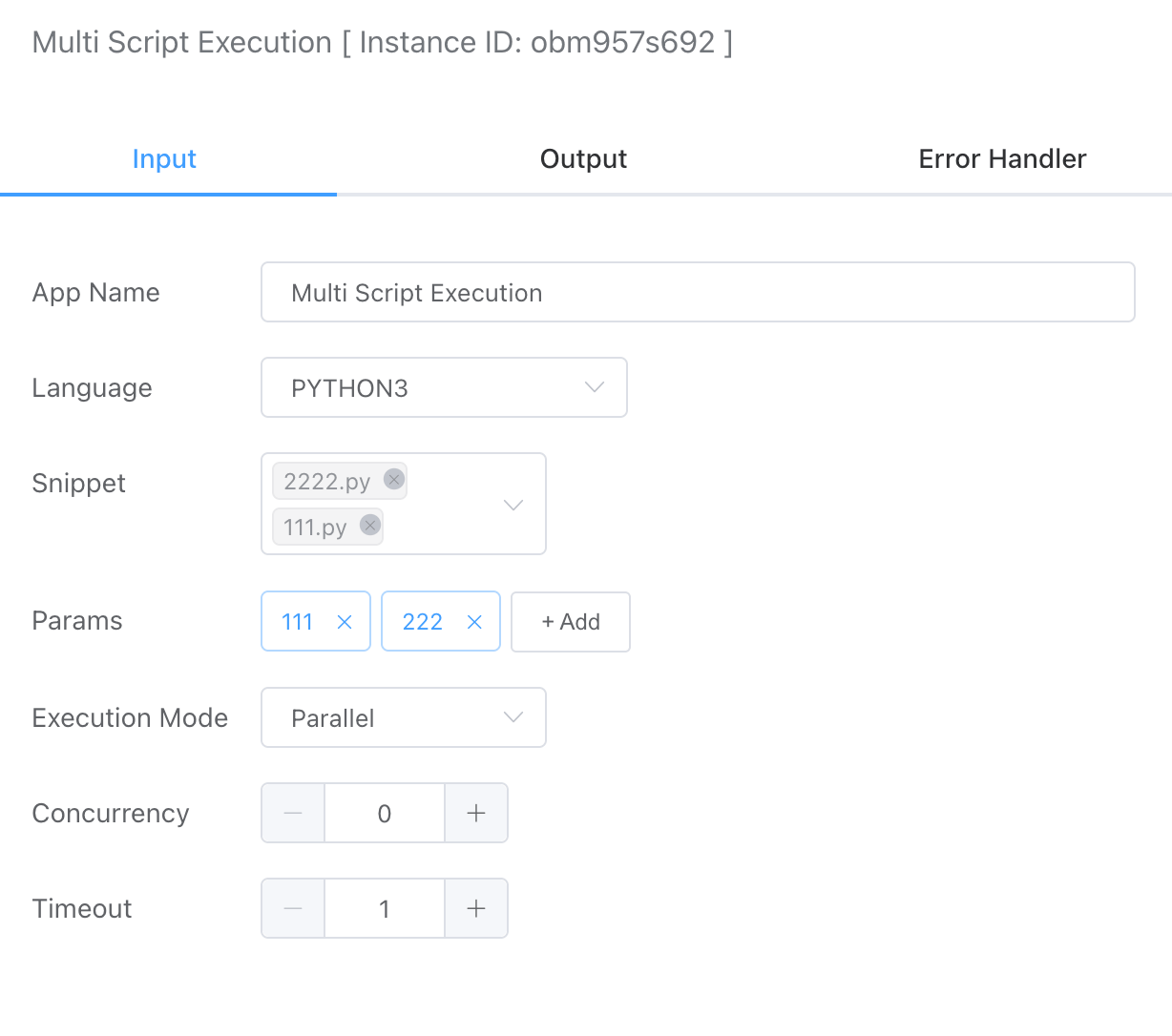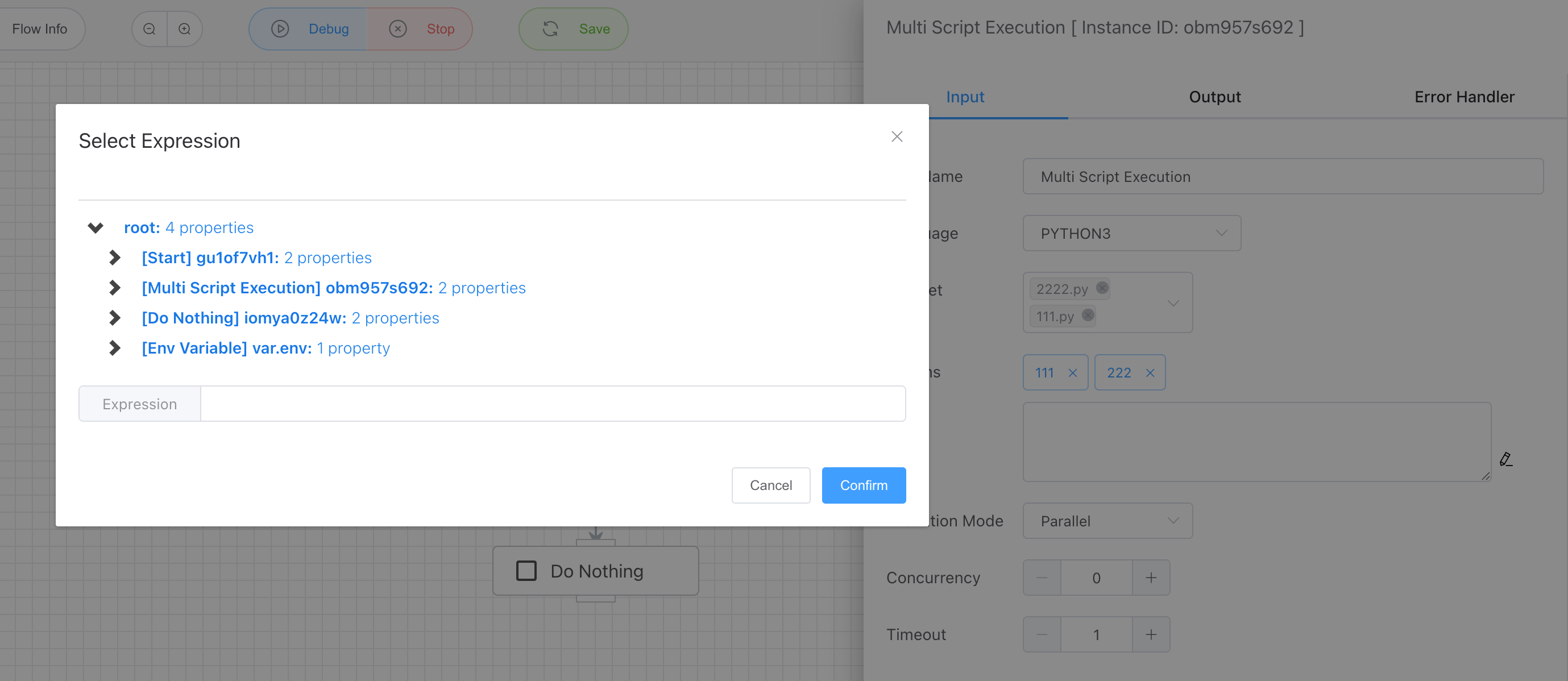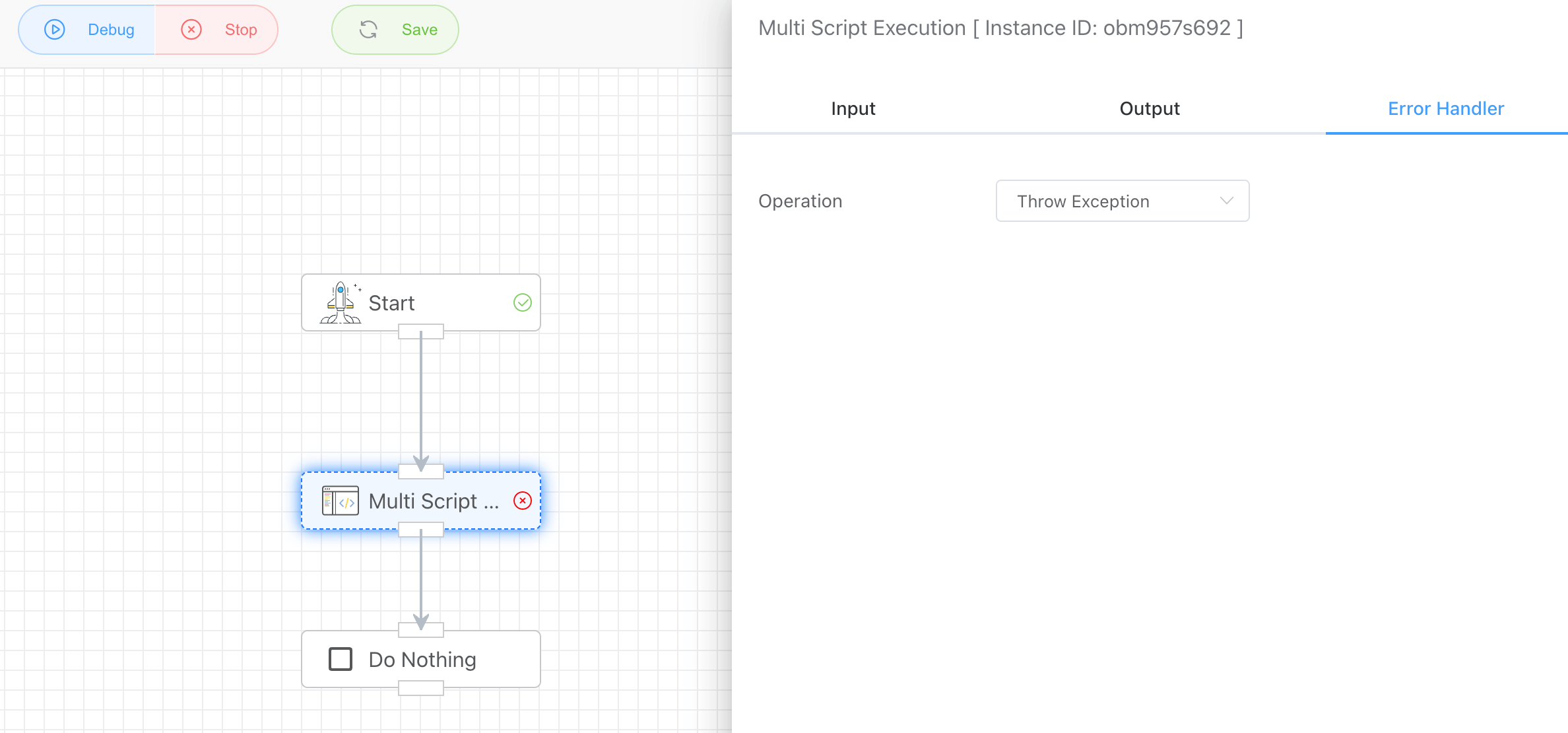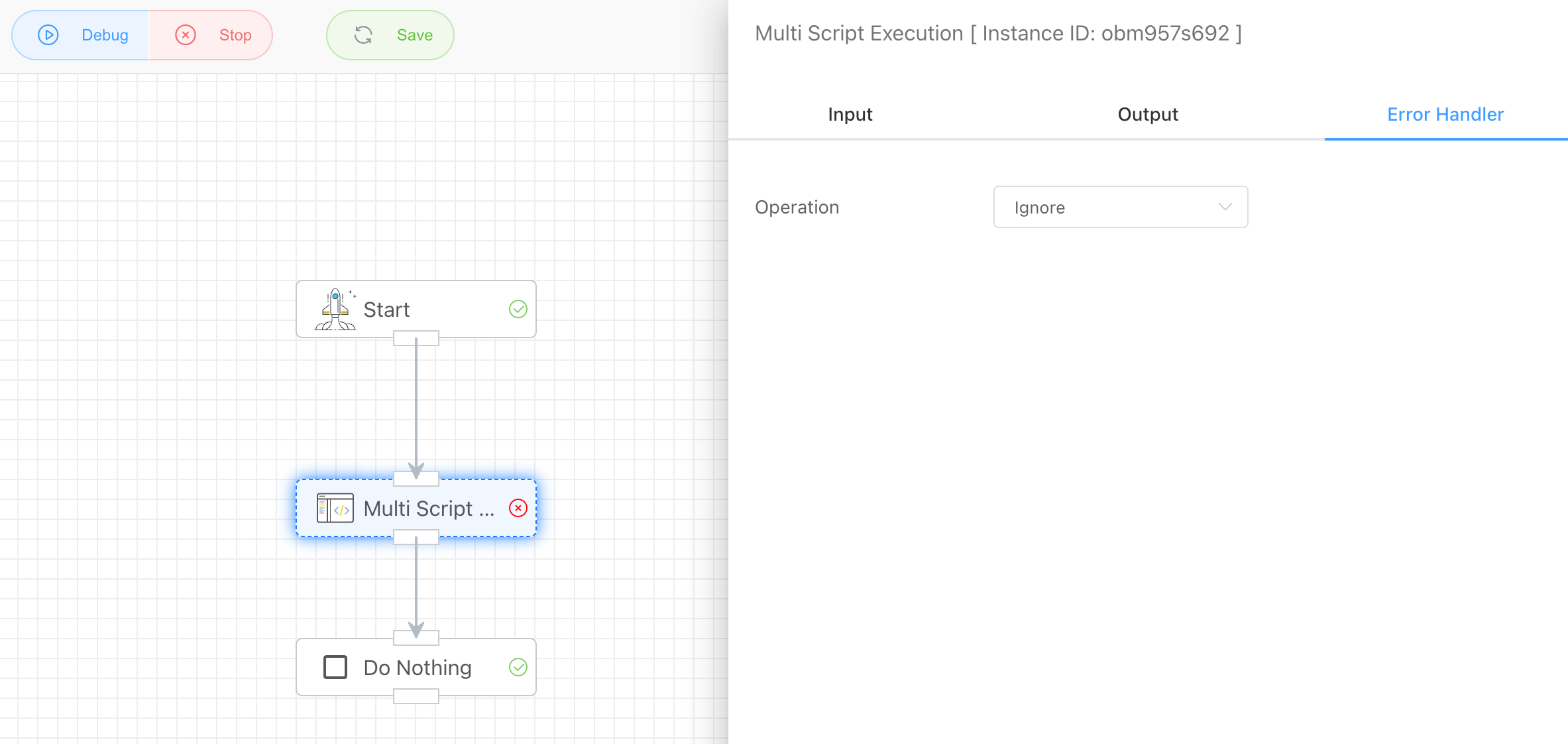# Multi Script Execution
It supports running multiple scripts either concurrently in parallel or sequentially one after another.
# Input

# Language
Local Native Virtual Machine
- Python3
- JavaScript
- PHP
- LUA
- SHELL
Note: The local native virtual machine depends on the current machine environment. If the corresponding virtual machine is not available, the script cannot be executed.
# Snippet
Code snippets will be displayed under the corresponding programming language list in File Management -> Code Snippet.

# Params
Here you can pass parameters to the script through sys.argv (python script) or $argv (php script). Of course, you can also use variable expressions to reference previous output as input to the script.


# Execution Mode
Parallel Execution
The selected scripts run simultaneously, which can improve execution efficiency. You can set the number of scripts to run at runtime. The default value is 0, which means all scripts are executed simultaneously.
Sequential Execution
The selected scripts run one after another, with each script only starting after the previous one has finished.
# Timeout
Set the script execution timeout. If the execution exceeds this time, the system will forcibly terminate the script and output an error message.
[
{
"./snippet/xqnnyrdgdv/111.py": {
"cost": 1004,
"endAt": "2025-07-08 08:14:57.643",
"error": "execute command timeout",
"output": null,
"startAt": "2025-07-08 08:14:56.639"
},
"./snippet/xqnnyrdgdv/2222.py": {
"cost": 1004,
"endAt": "2025-07-08 08:14:56.639",
"error": "execute command timeout",
"output": null,
"startAt": "2025-07-08 08:14:55.635"
}
}
]
# Error Handler
By default, the App will throw an exception when an error occurs, and then stop the subsequent App from running. Here, even if only one script is abnormal, the entire App will report an error. If you want to ignore the error and continue running, you can choose to ignore it in the exception handling operation.

Ignore the error and continue running:

# Output
Since multiple script executions can be selected, the output structure is in the form of Key-Value pairs as follows:
[
{
"./snippet/xqnnyrdgdv/111.py": {
"cost": 5038,
"endAt": "2025-07-08 08:41:18.755",
"error": "",
"output": "['/iolinker/snippet/xqnnyrdgdv/111.py', '111', '222']",
"startAt": "2025-07-08 08:41:13.717"
},
"./snippet/xqnnyrdgdv/2222.py": {
"cost": 3036,
"endAt": "2025-07-08 08:41:16.753",
"error": "",
"output": "['/iolinker/snippet/xqnnyrdgdv/2222.py', '111', '222']",
"startAt": "2025-07-08 08:41:13.717"
}
}
]
Here, the output from the terminal will be used as the result for this APP. For example:
Python3
You can output using
print:print('xxx')Note: The
printmethod adds a newline by default, which affects the output. To avoid newlines, use:print('xx', end='')JavaScript
You can output using
console.log:console.log('xxx')PHP
You can output using
echo:<?php echo "123";
← Code Execution LLM →